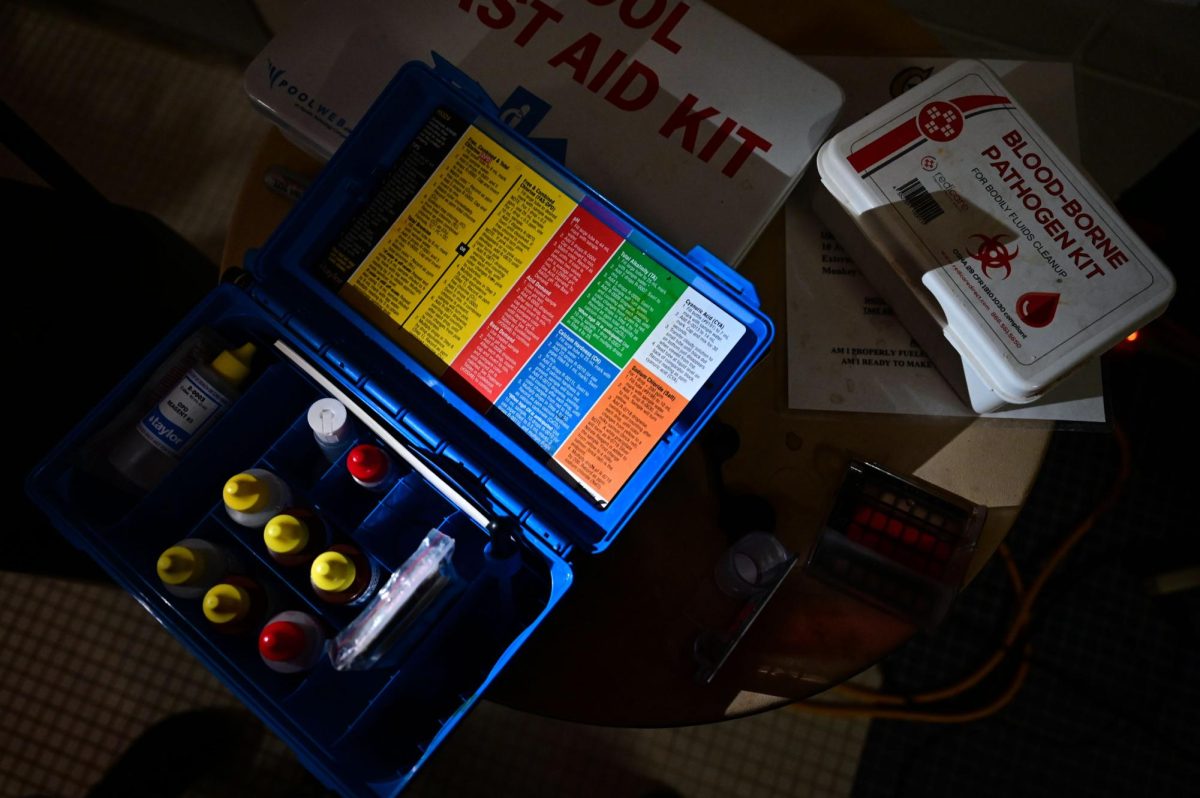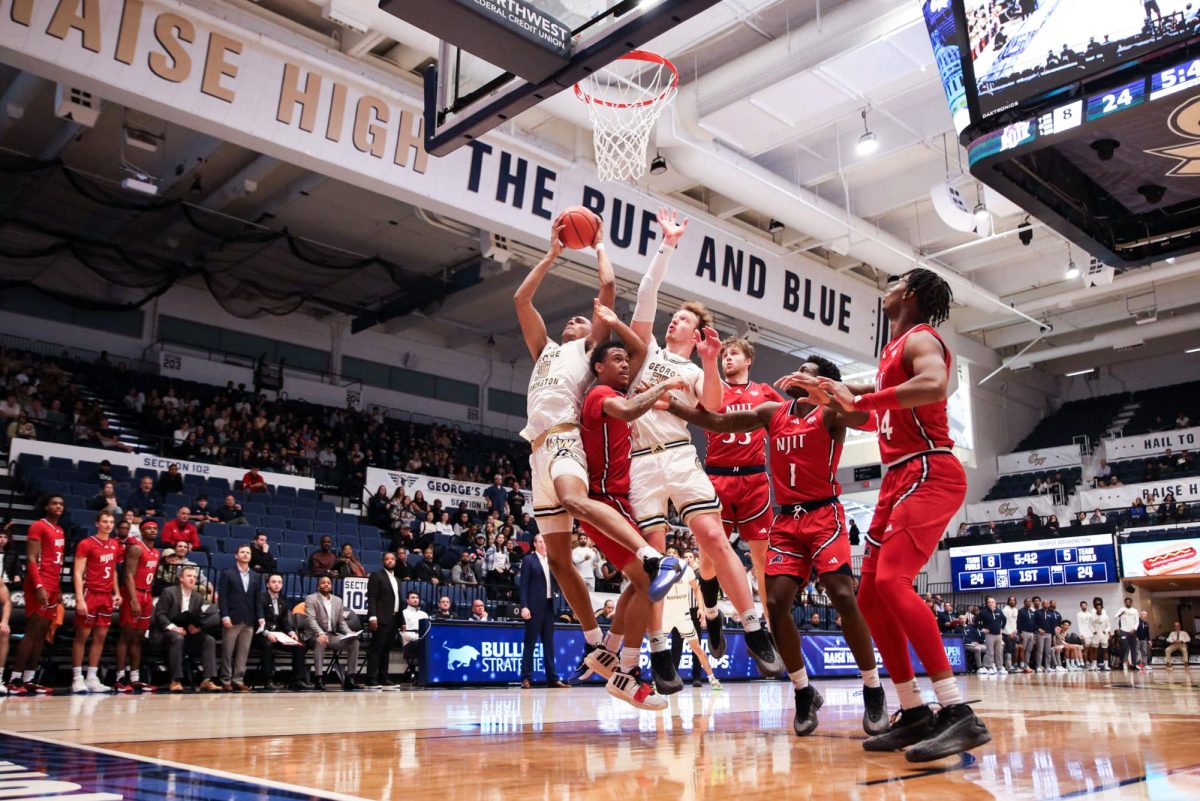The Colonials’ bus was easy to pick out on a cold February night as it traveled back to D.C. from Richmond, Va.
As it drove on the highway on the way back to the Smith Center, streetlights and passing cars illuminated its white sides and large GW logos. But it wasn’t until you looked inside the windows that anything seemed particularly noticable.
The entire bus, from players to coaching staff, was watching tape of the game the team had played just hours before.
“My thing is, I would tell them, ‘play hard,’ ” head coach Mike Lonergan said. “It solves a lot of problems.”
That amount of preparation was necessary this year, as the Colonials squared off against a deep and dangerous Atlantic 10 lineup.
The 16-team league was at all-time heights, and made even reaching postseason play more challenging when the conference’s tournament didn’t readjust accordingly.
The A-10 will undergo another metamorphosis next year, losing four teams but adding George Mason, GW’s Orange Line neighbor. It leaves the league with 13 total teams, which will also require adjusting scheduling to a 16- or 18-game schedule. Lonergan and athletic director Patrick Nero have a clear preference.
“I like the 16-game schedule,” Lonergan said. “To beat the best, you have to play the best, and we really like to play a very good non-conference schedule. Our strength of schedule is 90th in the country.”
“Sixteen gives us a good balance,” Nero agreed. “Obviously, the Atlantic 10 is going to be incredibly competitive again, so we know we’re going to have 16 tough games there.”
Though the Colonials may not have a concrete understanding of what their schedule will look like, their head coach is already thinking of his roster. This year, he said, GW’s new players made the veterans better, and vice versa.
It’s a relationship he’s hoping to see continue next year. Certain holes in GW’s play need to be filled through recruiting, but the team is also at its best when veteran players display peak performances.
Freshmen Kethan Savage and Patricio Garino, Joe McDonald and Kevin Larsen made waves for the Colonials this season as the “freshman four.” But even with that in mind, Lonergan is considering revamping next year’s starting lineup. He’d like to see Lasan Kromah start in his final year, and thinks the senior guard could join pieces from this year’s starting five.
“We decided to bring Lasan off the bench [this season],” Lonergan said. “I thought it was good for [freshman forward] Kethan [Savage], because if Kethan wasn’t playing great, we could always bring Lasan in. It’s hard to bring a freshman off the bench – if he’s not playing well, then you don’t have anybody else. I give Lasan credit – we talked a lot about that, and he was willing to accept that role for the team. And he was still playing starter minutes.”
Returning calculations aside, Lonergan is realistic that he will need to answer some of the team’s challenges through recruiting. The Colonials’ glaring shooting struggles crippled the team at times this season, particularly down the stretch, when GW lost four of its last five games, forcing a win-and-in situation in its last home game.
The team’s incoming recruits will afford its head coach the chance to shuffle the lineups. The starters could depend on the matchup, Lonergan said. McDonald could switch to the two at times, joining Garino in jamming the wings.
“I think we have a guard coming in that – I can’t talk about it – but that has a great chance to start,” Lonergan said. “I think we’ll have more ability to score. We struggled to score at times. And that’s because we’re bringing in a couple of guys that can shoot the ball better – open things up.”
Improved shooting, too, would have been crucial in pulling out victories in tight games against powerhouse foes – of which there were so many, from Kansas State to Temple and Saint Louis to Butler – that at times, they seemed to blend together.
Those wins will come, Lonergan said. He said he hopes the bounces will start to go GW’s way as the culture of the team shifts to one determined to power its way to victory.
Shades of that culture are already evident, Lonergan and Nero agreed. The head coach credits much of that to senior forward Isaiah Armwood, who exemplified the coach’s desired hustle and heads-up play at many times this season.
“He plays so hard,” Lonergan said. “I give him a lot of credit. He rebounds, he plays hard, he practices hard, too. And he worked on his game. His elbow jumper, when he got here – his 15-foot jumper – was not a very good shot.”
The shift can be seen in other places, too, Nero said. The fan base is reinvigorated and packed the Smith Center for some games this season. When the team took the court in the Barclays Center for the first round of tournament action, the GW student section was full and deafening. Massachusetts’ section of the stands was empty.
From the seats to the court, Nero said, the fire was there.
“I see that effort. That effort, every night, was there. They were dying at the end,” Nero said. “If we look back and saw that we didn’t see improvement, that we weren’t competitive, that I didn’t see hope, then I’d get nervous.”
GW ended with a 13-17 overall record this season, only a slight increase from last year’s 10-21 campaign. It wasn’t the result he wanted, but records can be misleading, Lonergan said.
And while GW’s 2012-13 season might be officially in the books, Lonergan isn’t quite ready to turn away. Like during the post-game bus rides back to the District, he doesn’t see any time for a break.
“I text our guys, I tell them that we’re close,” Lonergan said.






